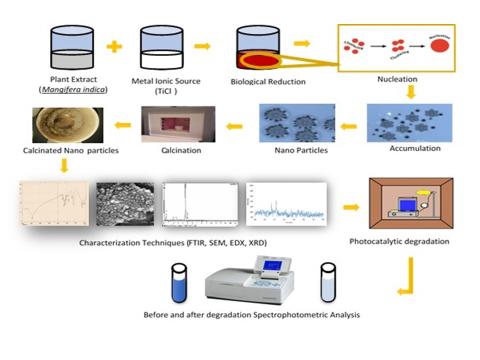You are here
The Synthesis of Titania Nanoparticles (TiO2) and its Methylene Blue Dye removal efficiency through Photocatalysis based on Response Surface Methodology (RSM)

Water pollution has been acknowledged as an issue of concern due to recalcitrant pollutants like textile dyes. Therefore, the eco-friendly synthesis of nano-particles (NPs) through green chemistry approach from sources and materials of organic origin has not only enhanced the properties of substance at nanoscale but has also reduced the toxicological impacts on human health and the environment. In this study a successful attempt was made to synthesize TiO2 NPs by Mangifera indica leaves extract as organic source. The structural morphology was determined by carrying out FTIR, SEM, EDX and XRD techniques. The removal of Methylene Blue (MB) dye was assessed by the application of the photocatalysis technique. The experiments were designed using the RSM (CCD) approach for selected parameters such as pH, TiO2 NPs, Dye concentration and Time. The maximal dye removal efficiency of 98% was achieved at optimum conditions of 4.7 pH, 0.04g of nano photocatalyst in 250ml of dye solution having 8ppm concentration, allowed to react for 45 min. The regression coefficient value of 79.37% was determined by ANOVA for MB dye. The results clearly indicate that the application of green nanoparticles for the removal of MB dye is a feasible option to overcome with the ever-increasing issue of water pollution and environmental degradation.
